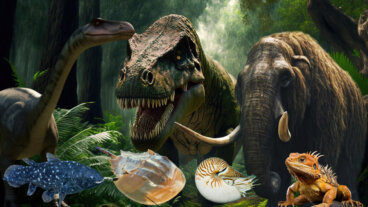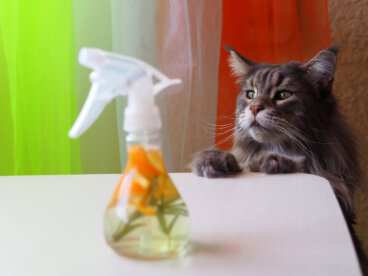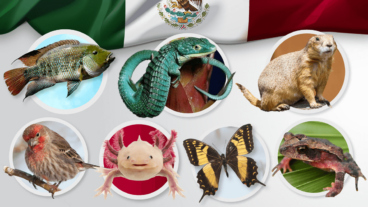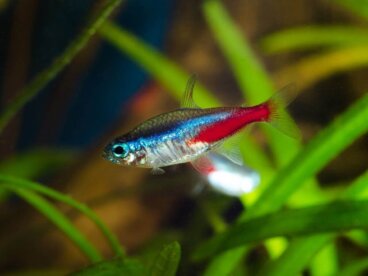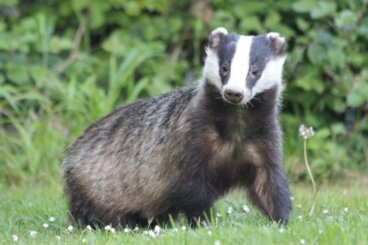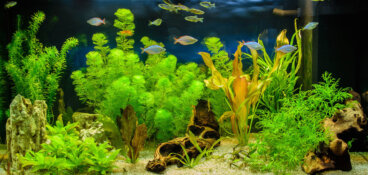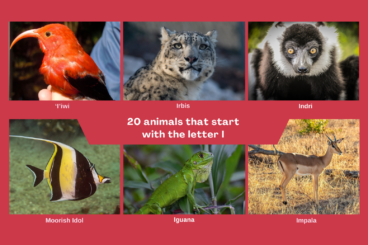How Superworms Turn Polystyrene into a Healthy Meal


Written and verified by the biologist Cesar Paul Gonzalez Gonzalez
One of the biggest ecological problems today is the use of plastics and their degradation. In nature, these petroleum-derived objects are processed by very few animals, which leads to an excessive accumulation that can never be solved. Recently, however, some superworms have been discovered that are capable of transforming polystyrene foam – also called styrofoam – (a type of plastic) into food.
Extruded polystyrene, also called polystyrene foam, is one of the most commonly used plastics for food packaging and even household appliances. For this reason, it’s hardly surprising that there’s excessive waste that’s dangerous for the environment. That’s why the existence of these so-called superworms, which convert polystyrene foam into food, is so important. Learn more about them in the following article.
Why are plastics difficult to degrade?
Plastics are made up of giant molecules called macromolecules, which are artificially created from smaller carbon molecules. This process is called polymerization and causes them to have a high chemical inertness. This means that they aren’t as susceptible to oxidation, moisture, or attack by certain chemicals.
This means that microorganisms, such as bacteria, fungi and protozoa, have great difficulty in transforming plastics into organic matter. Therefore, natural decomposition, which should take only a few months or a couple of years, takes several hundred years.
Thanks to their inert characteristics, plastics have become all too useful for human life, helping to protect food from natural degradation. However, this same capacity makes them a serious danger to the ecosystem because they take between 100 and 1000 years to disintegrate.
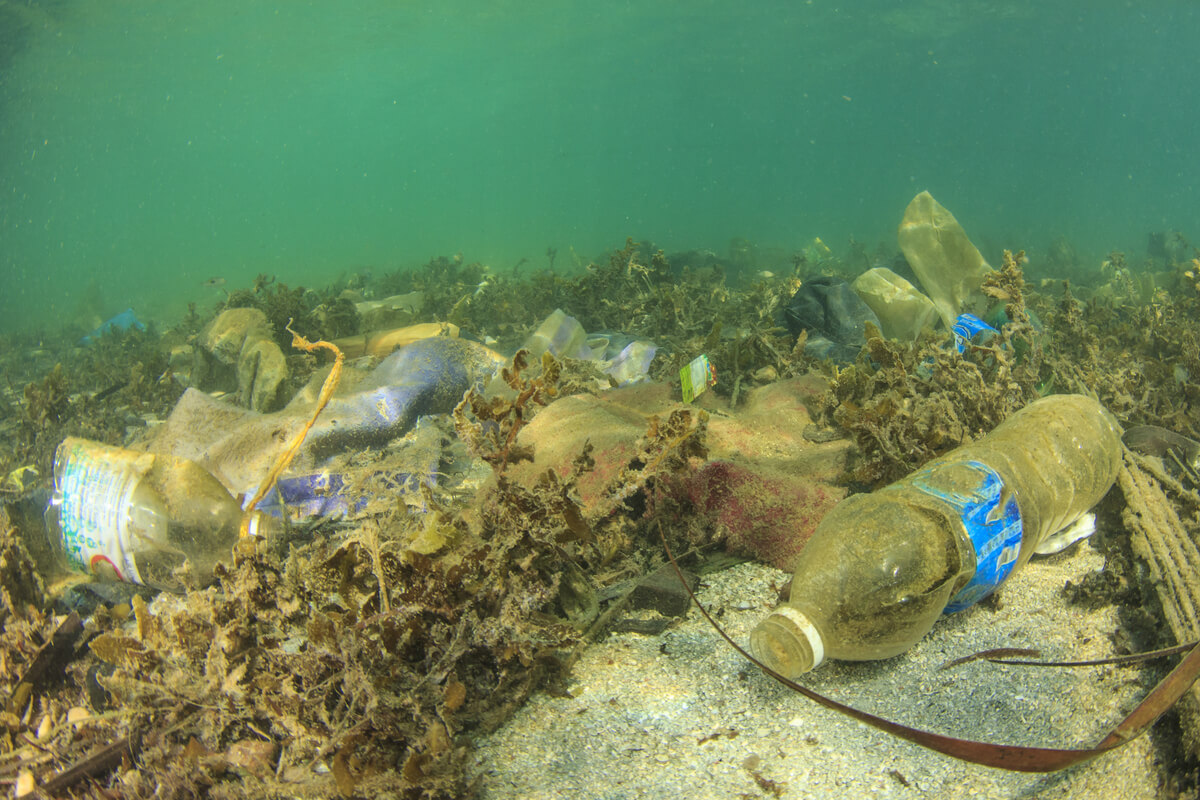
The superworms that eat polystyrene
A study published in the magazine Environmental Science & Technology mentions that different species of mealworms were able to survive in an environment contaminated with polystyrene. Moreover, they were able to digest large amounts of this plastic and transform it into carbon dioxide.
These small worms are actually the larvae of the mealworm beetle (Tenebrio spp.), so it was very surprising that they had such an ability. To top it off, they could survive by simply consuming the polystyrene without needing any other type of food.
In 2022, a group of scientists at the University of Queensland (Australia) realized that the mealworm wasn’t the only one that could consume polystyrene. Another species of beetle, Zophobas morio, also had this ability and even completed its entire life cycle with only this plastic as food.
Why are they called superworms?
It’s important to note that the degradation of polystyrene doesn’t lead to its use as a food resource. In other words, the simple fact that mealworms are capable of disintegrating this plastic doesn’t mean that they obtain nutrients by consuming it. This is what happens with larvae belonging to the genus Tenebrio.
In the case of Zophobas morio, the worms degrade polystyrene and obtain energy and nutrients by doing so, which makes them superworms. This unique characteristic opens up the possibility of using them to reduce plastic waste pollution.
How do they manage to degrade polystyrene?
The ability of superworms to degrade polystyrene is provided by the microorganisms that inhabit their intestines. These tiny creatures break down the plastic molecules and release their nutrients. Without them, the polystyrene fragments would pass through the entire digestive system and come out unchanged.
In the laboratory, 100 superworms are capable of degrading between 34 and 39 milligrams of Styrofoam per day. About 50 % of the plastic will be used as nutrients, while the rest will be converted into carbon dioxide.

The last step
The microorganisms that inhabit the gut of superworms are very diverse and different, as each one supports digestion in a different way. Among all of them, only a few are the ones that really help the destruction and utilization of plastic components. For this reason, the scientists used metagenomics techniques to analyze the gut microbiota and find the culprits.
Although it sounds simple, the process is time-consuming and involves analyzing a huge amount of data. As a result, the only thing that was achieved was to identify the bacterial genera Pseudomonas, Rhodococcus, and Corynebacterium as possible culprits.
Although they didn’t identify which gene or genes were involved in the degradation of polystyrene, this research is a clear advance in the fight against plastic pollution. It’s very likely that the next step will focus on finding the enzymes responsible for this phenomenon. This would be enough to produce them synthetically and in large quantities without relying on the worm.
As you can see, it may take several more years to solve the problem of plastic pollution. However, current progress is promising and expectations are high. At this point, we can only hope that the research goes smoothly and that mankind will soon enjoy its benefits.
One of the biggest ecological problems today is the use of plastics and their degradation. In nature, these petroleum-derived objects are processed by very few animals, which leads to an excessive accumulation that can never be solved. Recently, however, some superworms have been discovered that are capable of transforming polystyrene foam – also called styrofoam – (a type of plastic) into food.
Extruded polystyrene, also called polystyrene foam, is one of the most commonly used plastics for food packaging and even household appliances. For this reason, it’s hardly surprising that there’s excessive waste that’s dangerous for the environment. That’s why the existence of these so-called superworms, which convert polystyrene foam into food, is so important. Learn more about them in the following article.
Why are plastics difficult to degrade?
Plastics are made up of giant molecules called macromolecules, which are artificially created from smaller carbon molecules. This process is called polymerization and causes them to have a high chemical inertness. This means that they aren’t as susceptible to oxidation, moisture, or attack by certain chemicals.
This means that microorganisms, such as bacteria, fungi and protozoa, have great difficulty in transforming plastics into organic matter. Therefore, natural decomposition, which should take only a few months or a couple of years, takes several hundred years.
Thanks to their inert characteristics, plastics have become all too useful for human life, helping to protect food from natural degradation. However, this same capacity makes them a serious danger to the ecosystem because they take between 100 and 1000 years to disintegrate.

The superworms that eat polystyrene
A study published in the magazine Environmental Science & Technology mentions that different species of mealworms were able to survive in an environment contaminated with polystyrene. Moreover, they were able to digest large amounts of this plastic and transform it into carbon dioxide.
These small worms are actually the larvae of the mealworm beetle (Tenebrio spp.), so it was very surprising that they had such an ability. To top it off, they could survive by simply consuming the polystyrene without needing any other type of food.
In 2022, a group of scientists at the University of Queensland (Australia) realized that the mealworm wasn’t the only one that could consume polystyrene. Another species of beetle, Zophobas morio, also had this ability and even completed its entire life cycle with only this plastic as food.
Why are they called superworms?
It’s important to note that the degradation of polystyrene doesn’t lead to its use as a food resource. In other words, the simple fact that mealworms are capable of disintegrating this plastic doesn’t mean that they obtain nutrients by consuming it. This is what happens with larvae belonging to the genus Tenebrio.
In the case of Zophobas morio, the worms degrade polystyrene and obtain energy and nutrients by doing so, which makes them superworms. This unique characteristic opens up the possibility of using them to reduce plastic waste pollution.
How do they manage to degrade polystyrene?
The ability of superworms to degrade polystyrene is provided by the microorganisms that inhabit their intestines. These tiny creatures break down the plastic molecules and release their nutrients. Without them, the polystyrene fragments would pass through the entire digestive system and come out unchanged.
In the laboratory, 100 superworms are capable of degrading between 34 and 39 milligrams of Styrofoam per day. About 50 % of the plastic will be used as nutrients, while the rest will be converted into carbon dioxide.

The last step
The microorganisms that inhabit the gut of superworms are very diverse and different, as each one supports digestion in a different way. Among all of them, only a few are the ones that really help the destruction and utilization of plastic components. For this reason, the scientists used metagenomics techniques to analyze the gut microbiota and find the culprits.
Although it sounds simple, the process is time-consuming and involves analyzing a huge amount of data. As a result, the only thing that was achieved was to identify the bacterial genera Pseudomonas, Rhodococcus, and Corynebacterium as possible culprits.
Although they didn’t identify which gene or genes were involved in the degradation of polystyrene, this research is a clear advance in the fight against plastic pollution. It’s very likely that the next step will focus on finding the enzymes responsible for this phenomenon. This would be enough to produce them synthetically and in large quantities without relying on the worm.
As you can see, it may take several more years to solve the problem of plastic pollution. However, current progress is promising and expectations are high. At this point, we can only hope that the research goes smoothly and that mankind will soon enjoy its benefits.
All cited sources were thoroughly reviewed by our team to ensure their quality, reliability, currency, and validity. The bibliography of this article was considered reliable and of academic or scientific accuracy.
- Sun, J., Prabhu, A., Aroney, S., & Rinke, C. (2022). Insights into plastic biodegradation: community composition and functional capabilities of the superworm (Zophobas morio) microbiome in styrofoam feeding trials. bioRxiv.
- Yang, Y., Yang, J., Wu, W. M., Zhao, J., Song, Y., Gao, L., … & Jiang, L. (2015). Biodegradation and mineralization of polystyrene by plastic-eating mealworms: Part 1. Chemical and physical characterization and isotopic tests. Environmental science & technology, 49(20), 12080-12086.
- Zielińska, E., Zieliński, D., Jakubczyk, A., Karaś, M., Pankiewicz, U., Flasz, B., … & Lewicki, S. (2021). The impact of polystyrene consumption by edible insects Tenebrio molitor and Zophobas morio on their nutritional value, cytotoxicity, and oxidative stress parameters. Food Chemistry, 345, 128846.
- Brandon, A. M., Gao, S. H., Tian, R., Ning, D., Yang, S. S., Zhou, J., … & Criddle, C. S. (2018). Biodegradation of polyethylene and plastic mixtures in mealworms (larvae of Tenebrio molitor) and effects on the gut microbiome. Environmental science & technology, 52(11), 6526-6533.
- Machona, O., Chidzwondo, F., & Mangoyi, R. (2022). Tenebrio molitor: possible source of polystyrene-degrading bacteria. BMC biotechnology, 22(1), 1-12.
This text is provided for informational purposes only and does not replace consultation with a professional. If in doubt, consult your specialist.


